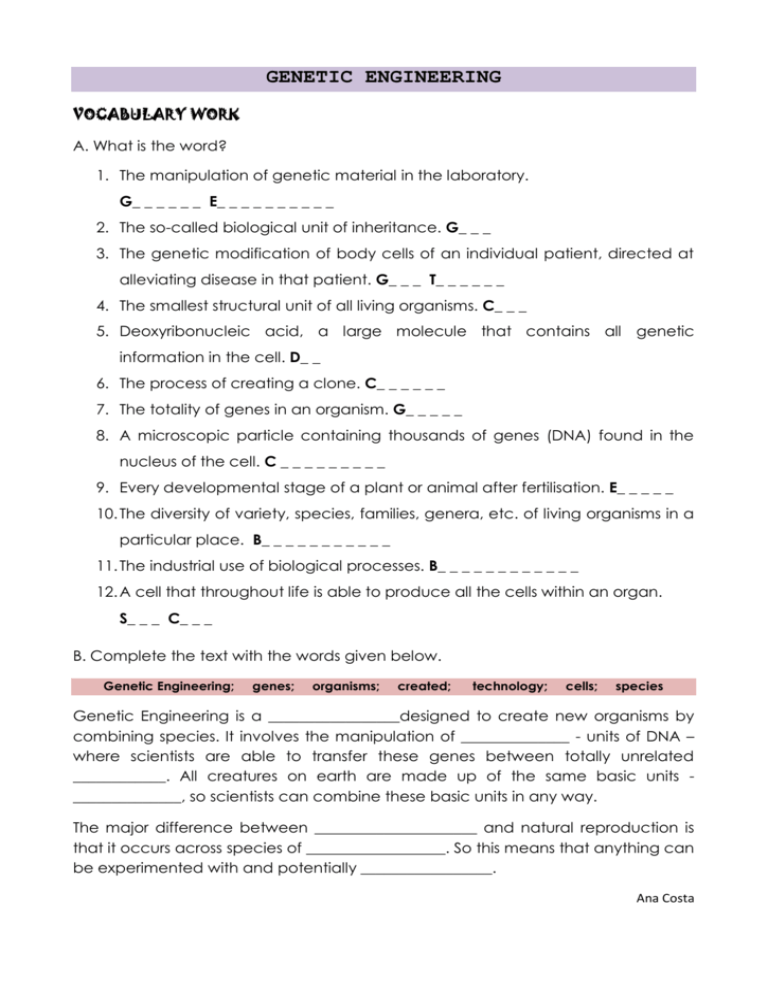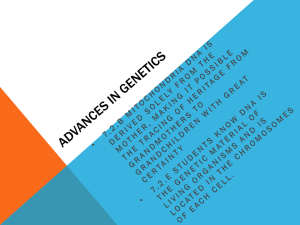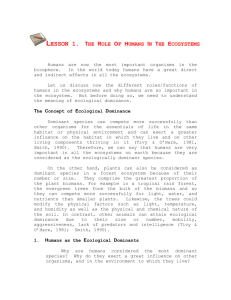genetic engineering - englishinwonderland
advertisement

GENETIC ENGINEERING VOCABULARY WORK A. What is the word? 1. The manipulation of genetic material in the laboratory. G_ _ _ _ _ _ E_ _ _ _ _ _ _ _ _ _ 2. The so-called biological unit of inheritance. G_ _ _ 3. The genetic modification of body cells of an individual patient, directed at alleviating disease in that patient. G_ _ _ T_ _ _ _ _ _ 4. The smallest structural unit of all living organisms. C_ _ _ 5. Deoxyribonucleic acid, a large molecule that contains all genetic information in the cell. D_ _ 6. The process of creating a clone. C_ _ _ _ _ _ 7. The totality of genes in an organism. G_ _ _ _ _ 8. A microscopic particle containing thousands of genes (DNA) found in the nucleus of the cell. C _ _ _ _ _ _ _ _ _ 9. Every developmental stage of a plant or animal after fertilisation. E_ _ _ _ _ 10. The diversity of variety, species, families, genera, etc. of living organisms in a particular place. B_ _ _ _ _ _ _ _ _ _ _ 11. The industrial use of biological processes. B_ _ _ _ _ _ _ _ _ _ _ _ 12. A cell that throughout life is able to produce all the cells within an organ. S_ _ _ C_ _ _ B. Complete the text with the words given below. Genetic Engineering; genes; organisms; created; technology; cells; species Genetic Engineering is a _________________designed to create new organisms by combining species. It involves the manipulation of ______________ - units of DNA – where scientists are able to transfer these genes between totally unrelated ____________. All creatures on earth are made up of the same basic units ______________, so scientists can combine these basic units in any way. The major difference between _____________________ and natural reproduction is that it occurs across species of __________________. So this means that anything can be experimented with and potentially _________________. Ana Costa A. What is the word? 1. The manipulation of genetic material in the laboratory. GENETIC ENGINEERING 2. The so-called biological unit of inheritance. GENE 3. The genetic modification of body cells of an individual patient, directed at alleviating disease in that patient. GENE THERAPY 4. The smallest structural unit of all living organisms. CELL 5. Deoxyribonucleic acid, a large molecule that contains all genetic information in the cell. DNA 6. The process of creating a clone. CLONING 7. The totality of genes in an organism. GENOME 8. A microscopic particle containing thousands of genes (DNA) found in the nucleus of the cell. CHROMOSOME 9. Every developmental stage of a plant or animal after fertilisation. EMBRYO 10. The diversity of variety, species, families, genera, etc. of living organisms in a particular place. BIODIVERSITY 11. The industrial use of biological processes. BIOTECHNOLOGY 12. A cell that throughout life is able to produce all the cells within an organ. STEM CELL B. Complete the text with the words given below. Genetic Engineering; genes; organisms; created; technology; cells; species Genetic Engineering is a technology designed to create new organisms by combining species. It involves the manipulation of genes - units of DNA – where scientists are able to transfer these genes between totally unrelated species. All creatures on earth are made up of the same basic units - cells, so scientists can combine these basic units in any way. The major difference between Genetic Engineering and natural reproduction is that it occurs across species of organisms. So this means that anything can be experimented with and potentially created.










